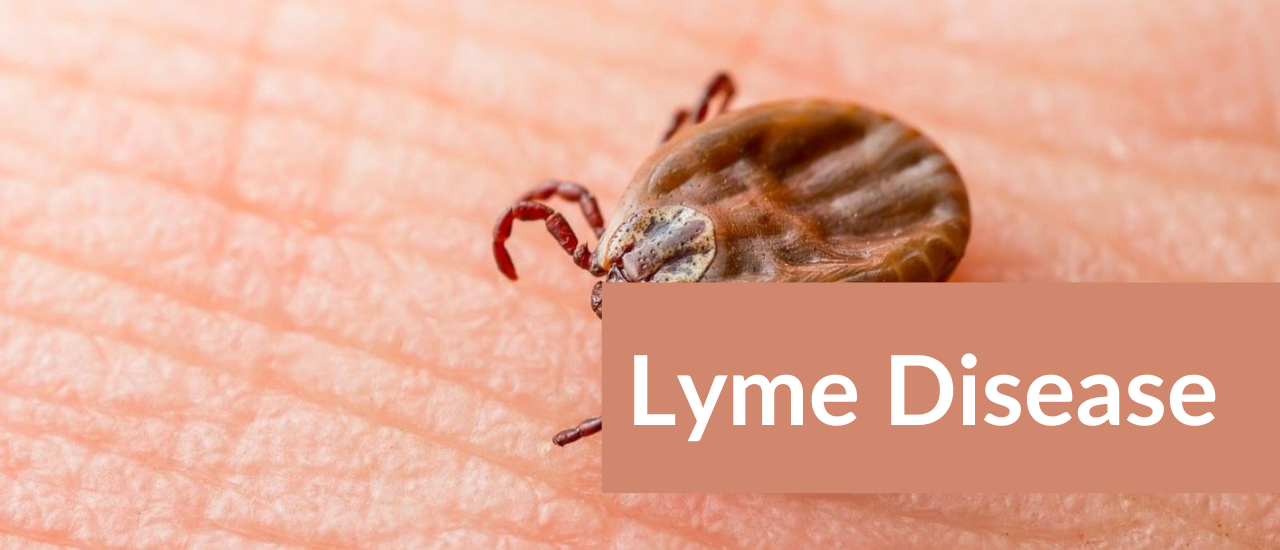


When an infected tick bites a human, Lyme disease rash is an infection that results. Joint pain might result from the illness. The bacterium Borrelia burgdorferi is the source of the contagious illness Lyme disease. Humans contract B. burgdorferi when a black-legged or deer tick bites them. After consuming infected mice, birds, or deer, the tick contracts the infection. The gram-negative spirochete bacteria Borrelia burgdorferi is well known for being the cause of Lyme disease. You run the risk of contracting Lyme disease if you spend time in regions where ticks thrive, such as grassy, brushy, and those who live or frequent woodland areas where the disease is known to spread.
Similar to a mosquito bite, a tick bite may appear as a tiny, irritating lump on your skin. Many people won’t even be aware they’ve been bitten by a tick. Different Lyme disease symptoms exist. They typically appear in phases. However, the phases can mix. Additionally, not everyone exhibits the typical early-stage symptoms.
Borrelia burgdorferi is a type of bacteria that causes Lyme disease (B burgdorferi). These bacteria can be carried by black-legged ticks, sometimes known as deer ticks. Ticks of some species can’t transport these germs. Castor bean ticks, sheep ticks, and deer ticks are a few names for these bugs. The most frequent carriers of Lyme disease are immature deer ticks, also referred to as nymphs. They resemble pinheads in size. Nymphs contract bacteria when they consume tiny rodents like mice that have been exposed to B. burgdorferi. Only when you are bitten by an infected tick may you develop Lyme disease.
Despite the fact that the majority of instances of Lyme disease may be healed with a 3- to 4-week course of oral antibiotics, patients can occasionally experience pain, exhaustion, or trouble thinking for more than 6 months after treatment.
Millions of cells make up the immune system, which works as a team to defend the body from pathogens like viruses and bacteria. A functioning immune system doesn’t target its own tissues, but autoimmune disease sufferers’ immune systems do. The immune system is made up of numerous distinct cell and protein components, and issues with any one of them could lead to dysfunction. Antibiotics can effectively treat Lyme disease, especially if it is found early. It can spread to other areas of your body and result in significant issues if left untreated. Lyme disease’s symptoms can resemble those of an autoimmune disease or even set off an autoimmune reaction.
Phases and stages of the development of Lyme disease might overlap and result in symptoms that can affect the skin, joints, heart, or brain system. These are the stages:
Typically, the first signs of Lyme illness appear 3 to 30 days following a tick bite. There aren’t many symptoms present at this stage of the disease. Early localized disease is what we refer to as. A rash is a typical Lyme disease symptom. However, it doesn’t always occur. The rash often begins as a single circle and slowly spreads from the tick bite site. The center could grow distinct and resemble a target or bull’s-eye. Although the rash frequently feels warm to the touch, it normally isn’t uncomfortable or unpleasant.
The Lyme illness might worsen if left untreated. Within 3 to 10 weeks of a tick bite, the symptoms frequently manifest. Stage 2 is frequently more severe and pervasive. Early-disseminated disease is the term for it. Stage 2 symptoms could also include those from stage 1 and the following:
You might experience additional symptoms in the third stage along with previous stage symptoms. Late-disseminated disease is the term for this stage. The most prevalent condition of this stage in the US is arthritis in big joints, especially the knees. Long-lasting discomfort, edoema, or stiffness is possible. The signs could also come and go. Symptoms of stage 3 typically appear 2 to 12 months after a tick bite. Acrodermatitis chronic atrophicans is a skin ailment that can be brought on by the kind of Lyme disease that is prevalent in Europe. The tops of the feet and the backs of the hands develop discoloured, swollen skin. The elbows and knees may also be affected. Joints or tissues may be harmed in more severe situations.
The black-legged tick, sometimes known as a “deer tick,” bites humans and causes the progressive bacterial infection known as Lyme disease.
No. Patients who receive antibiotic treatment in the early stages of the infection typically make a full recovery. Even while some may have sustained long-term damage to the neurological system or joints, the majority of patients who are treated in the later stages of the disease react effectively to antibiotics.
Lyme disease can result in numerous dangerous long-term health consequences if it is not promptly diagnosed and treated with antibiotics. However, with the correct care, even those with late-stage Lyme disease can entirely recover. You might require multiple medication courses and it might take longer for things to get back to normal.
Lyme disease is identified based on symptoms, physical signs (such as a rash), and the potential for tick exposure. If done appropriately and using procedures that have been established, laboratory testing is beneficial. With a few weeks of medicines, the majority of cases of Lyme disease can be successfully treated.
Signs Of Dust Mite Allery & What Factors Triggers To The Allergy
What Does A Roseola Rash Look Like?
How Mosquitos Zika Virus Affect During Pregnancy?
What Is Spinal Meningitis: Various Types & Tips
What Is Acute Respiratory Infections & Its Common Infections